Among the beautiful and creative hand embroidery work is a pattern called Hardanger. When looking for the history, I found several differing versions of how and where Hardanger got its start, but there is an agreement that Norway was prominent in its place of history for the work.
Since Norway has a city named Hardanger, that spot must have played an important role in the embroidery's history. The many facets of the design are often woven into the beautiful Norwegian long aprons called bunads. It is frequently seen, worldwide, in home linens as well.
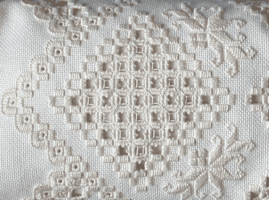
Photo courtesy of Wikipedia.
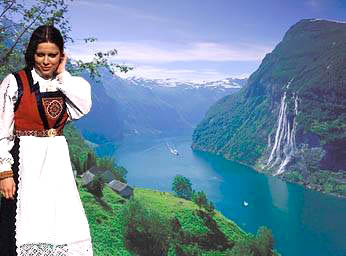

Maiden in bunad Midnight Sun
(Photos courtesy of Fjord Travel Norway.)
The fabric in Hardanger is as important as the actual stitching. It must be an ‘even weave' and typically a '22-count' weave. Hardanger is also considered to be ‘white work' which essentially means that it is accomplished ‘white on white' making it very subtly elegant. The sculptural nature makes it wonderful for pattern creation.
Hardanger embroidery uses Satin stitch blocks known as Kloster blocks, consisting of 5 parallel satin stitches, worked over a group of 4 x 4 ground threads. These blocks enclose areas of fabric where a number of warp and weft threads are cut and withdrawn, leaving a network of loose threads and large holes within the shape defined by the Kloster blocks. Various decorative filling stitches are then worked over the remaining loose threads and holes to create a lacy effect.
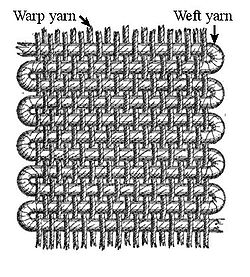
Photo courtesy of Wikipedia
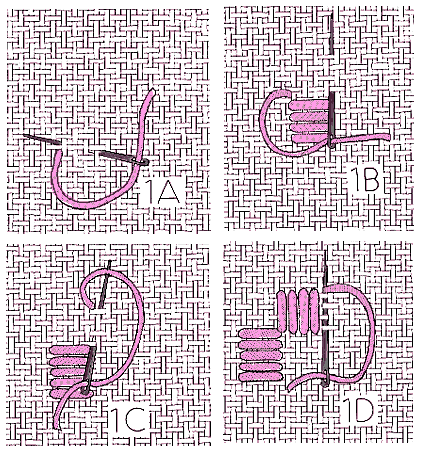
photo courtesy of https://www.caron-net.com/
This authentic hand Hardanger demonstrates where the interior threads will occur. The count and placement of each stitch must be accurate for this to work. My eyes won't do this anymore, but if some of can you do, or have examples, please show us your samples. Place them in the Forum or Galleries for us all to view and enjoy.
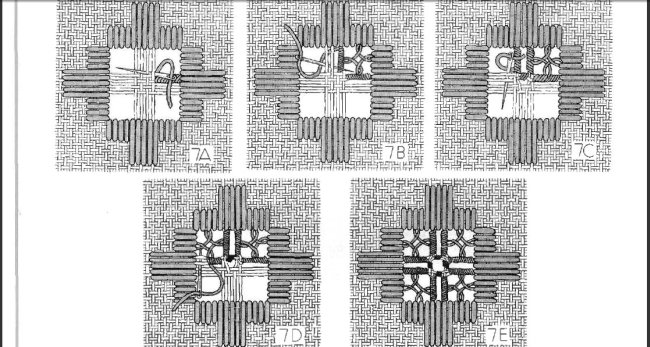
Photo courtesy of Nordic Needle
Digitizers are always trying to replicate special effects created by our early sisters in embroidery. This design is no exception. When I found the Hardanger motif, I thought of all the places I could use it. Those places included a tote bag pocket, linen selections and a pinafore for my granddaughter among other things. I did this project as a guest towel as available from All About Blanks. If you are not familiar with All About Blanks, they have the finest items of linen available on the net. These guest towels are only $39.99 for a dozen. I keep them around for a quick, easy and memorable last minute gift.
While I did not achieve an exact replica of Hardanger, I feel it is a great representation of the amazing world of embroidery of years gone by. Additionally, the digitizer for this pattern did replicate the inside twist called "dove eyes" as shown in the last diagram above.
The cross stitching of the design will now allow for definition of the flowers, and the digitizer does call for this to be done in floral colors. So, this is not following the Hardanger rules - but then again, who follows rules. . . .Additionally, this particular design can be done as a hanging ornament, and not just for Christmas. Imagine it as part of a wall decoration or placed in a foliage plant. What a find this one is! The design is courtesy of Laura's Sewing Studio.
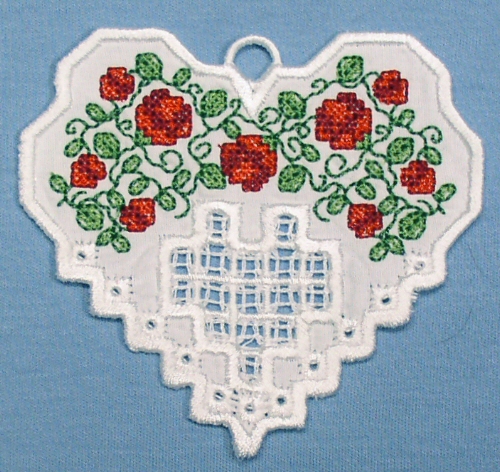
Photo courtesy of Laura's Sewing Studio.
There is an element of ‘cutwork' in Hardanger. As you are sewing, you will see the outline that will need to be removed. See my blog posting on "Cutwork" for further instructions. Don't forget that when you remove the fabric for the cutwork, leave your water soluble stabilizer (wss) in place. The remainder of the design will be placed there.
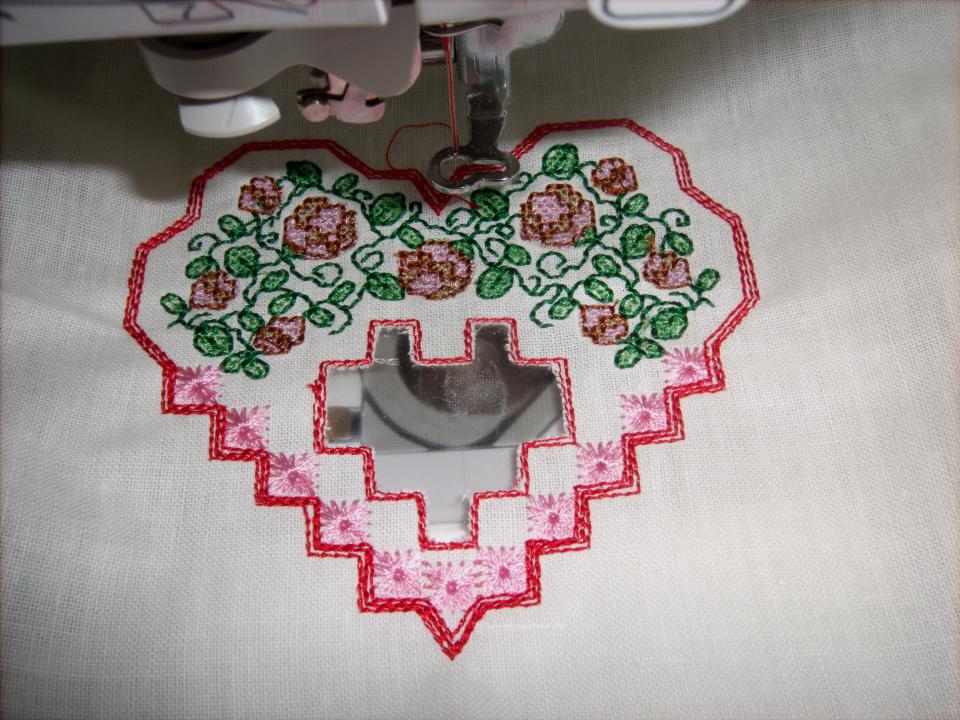
After I completed the design, for better visibility, I kept the wss in place. Naturally, I will remove it before giving it as a gift. Here is my interpretation of that design, and I am delighted with the results. Using quality fabric and design always pays off!
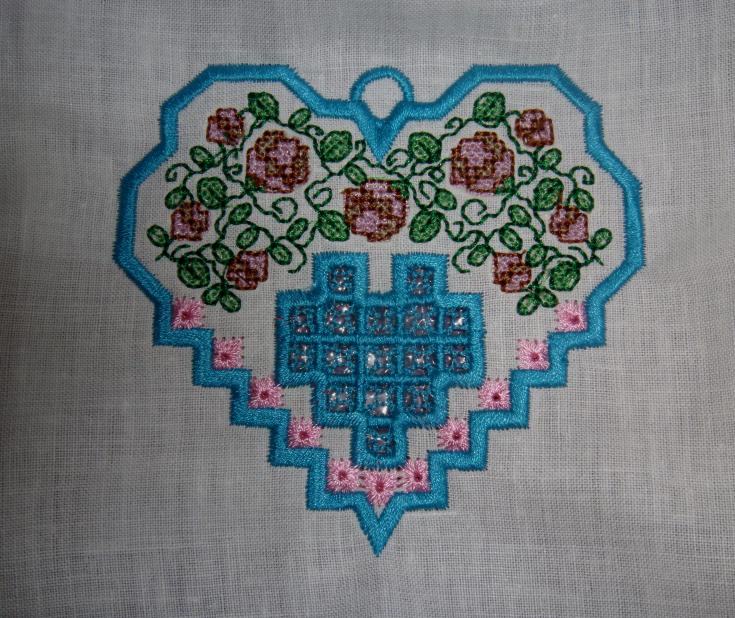
Try it, you will love the heirloom quality of it.